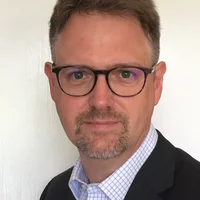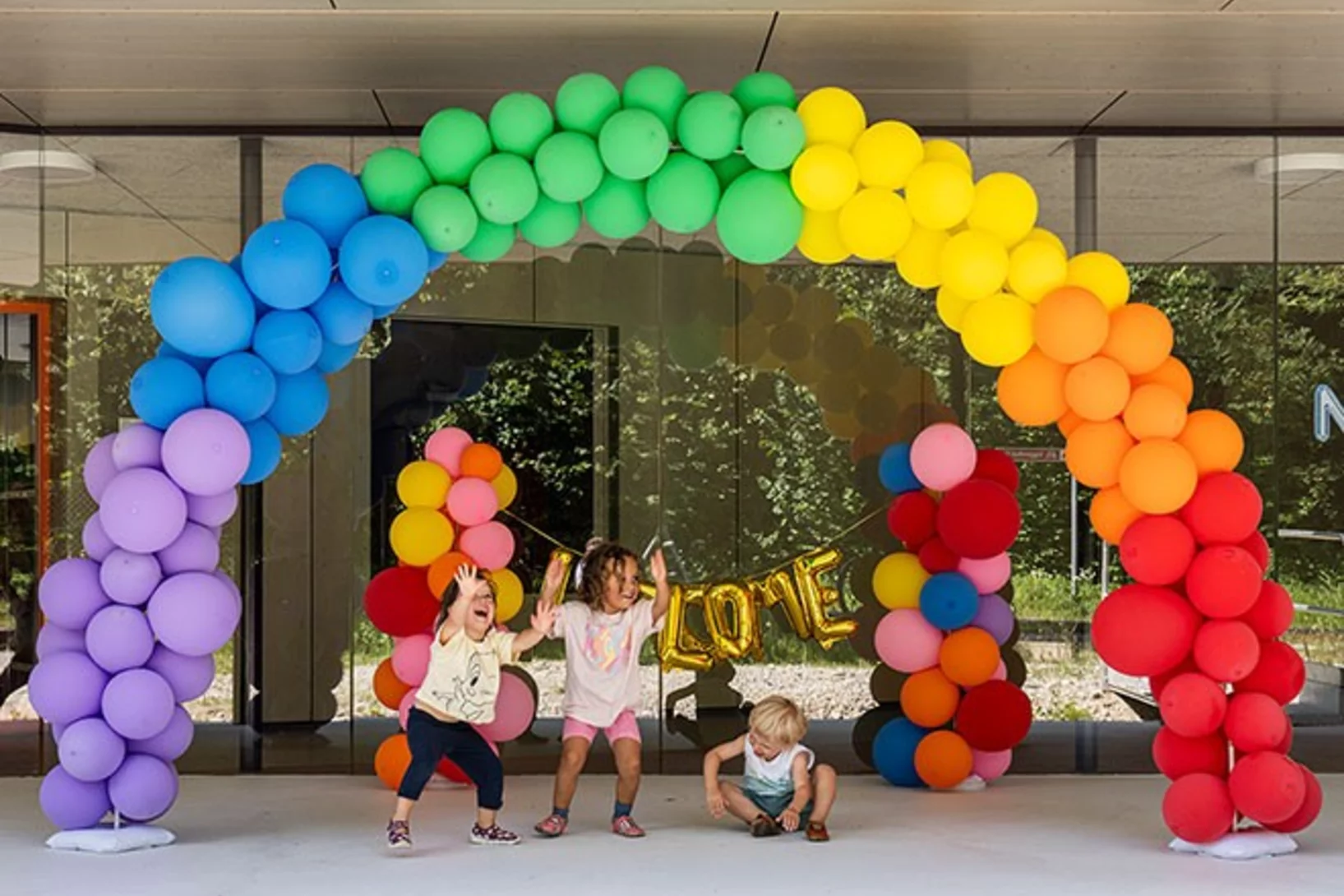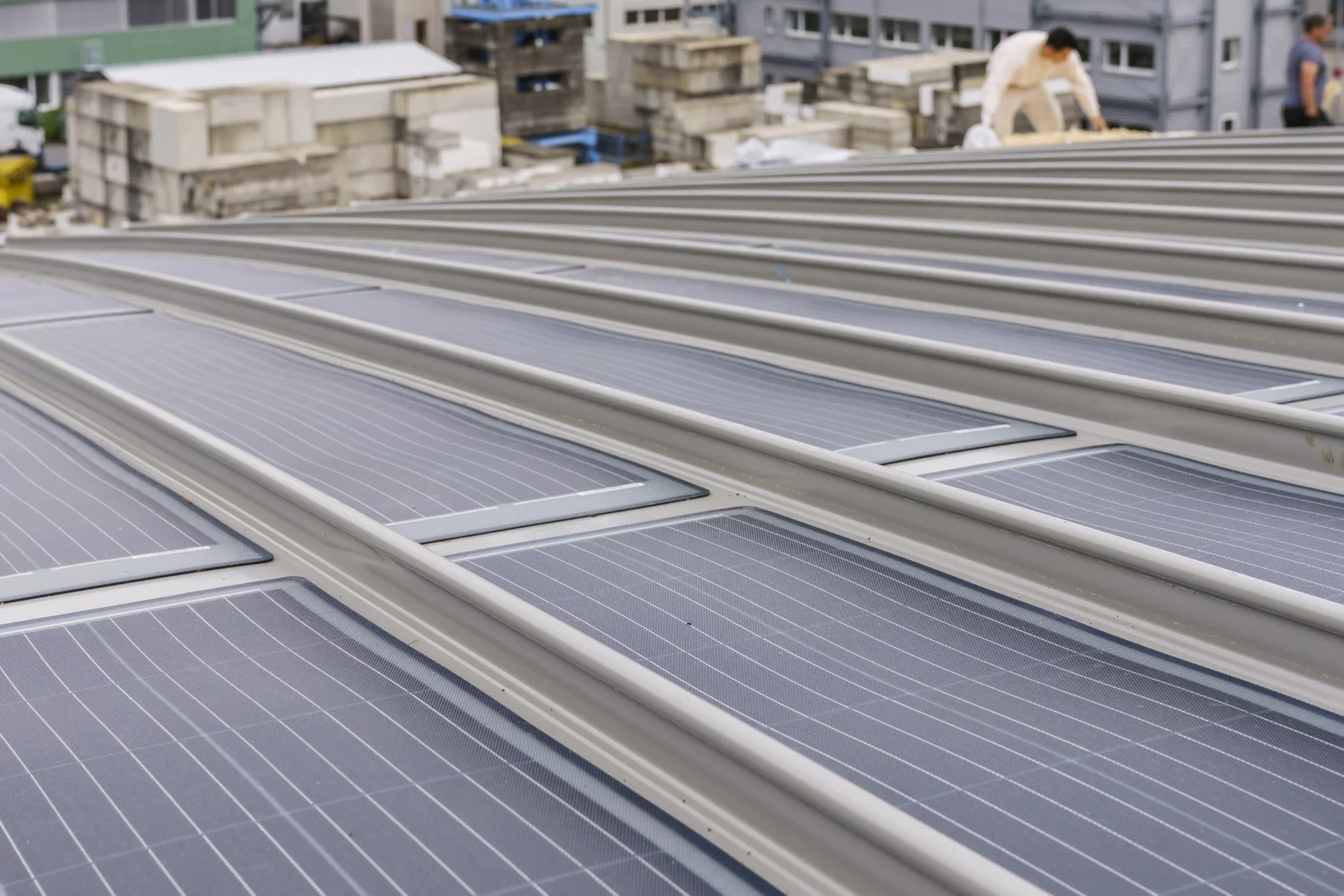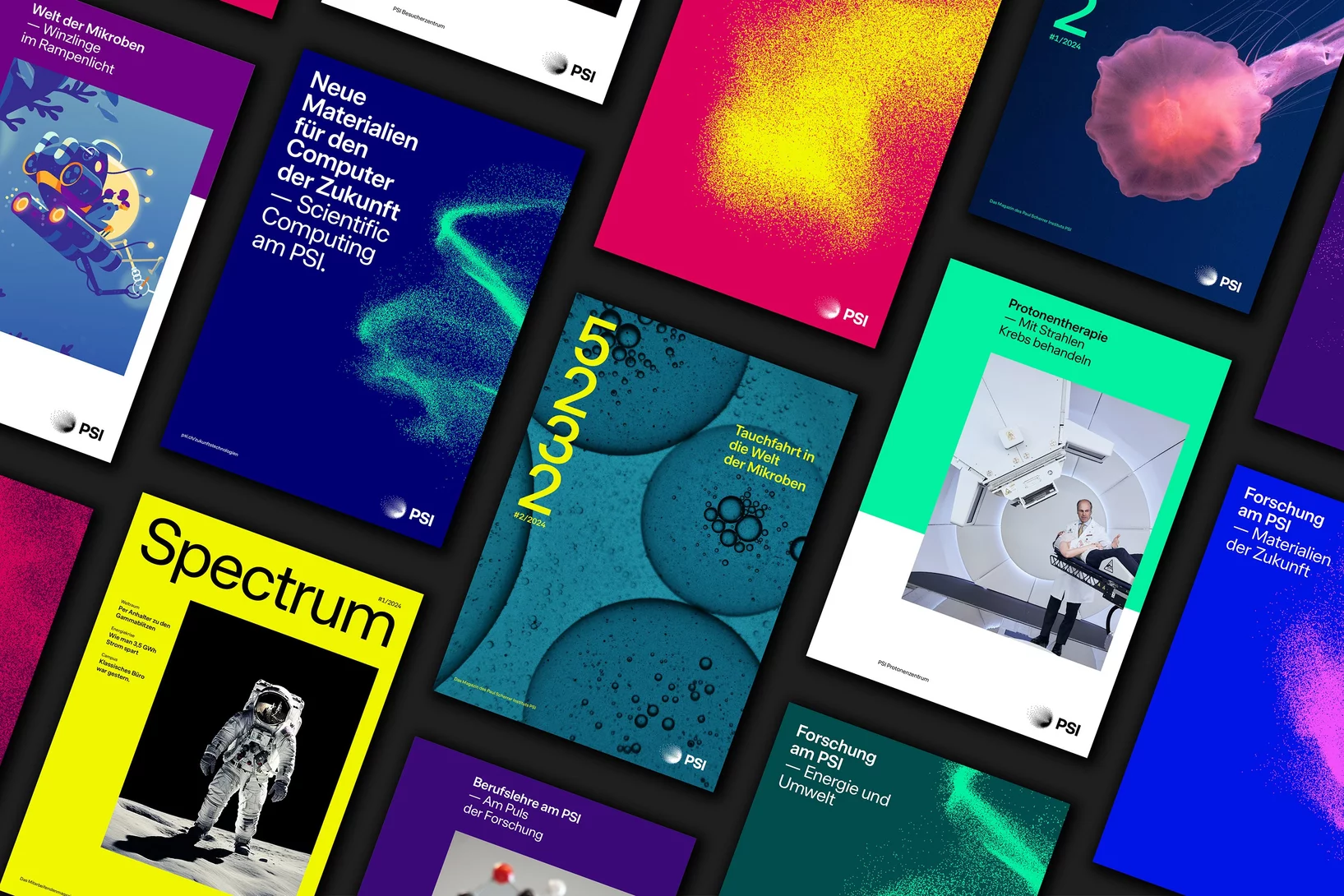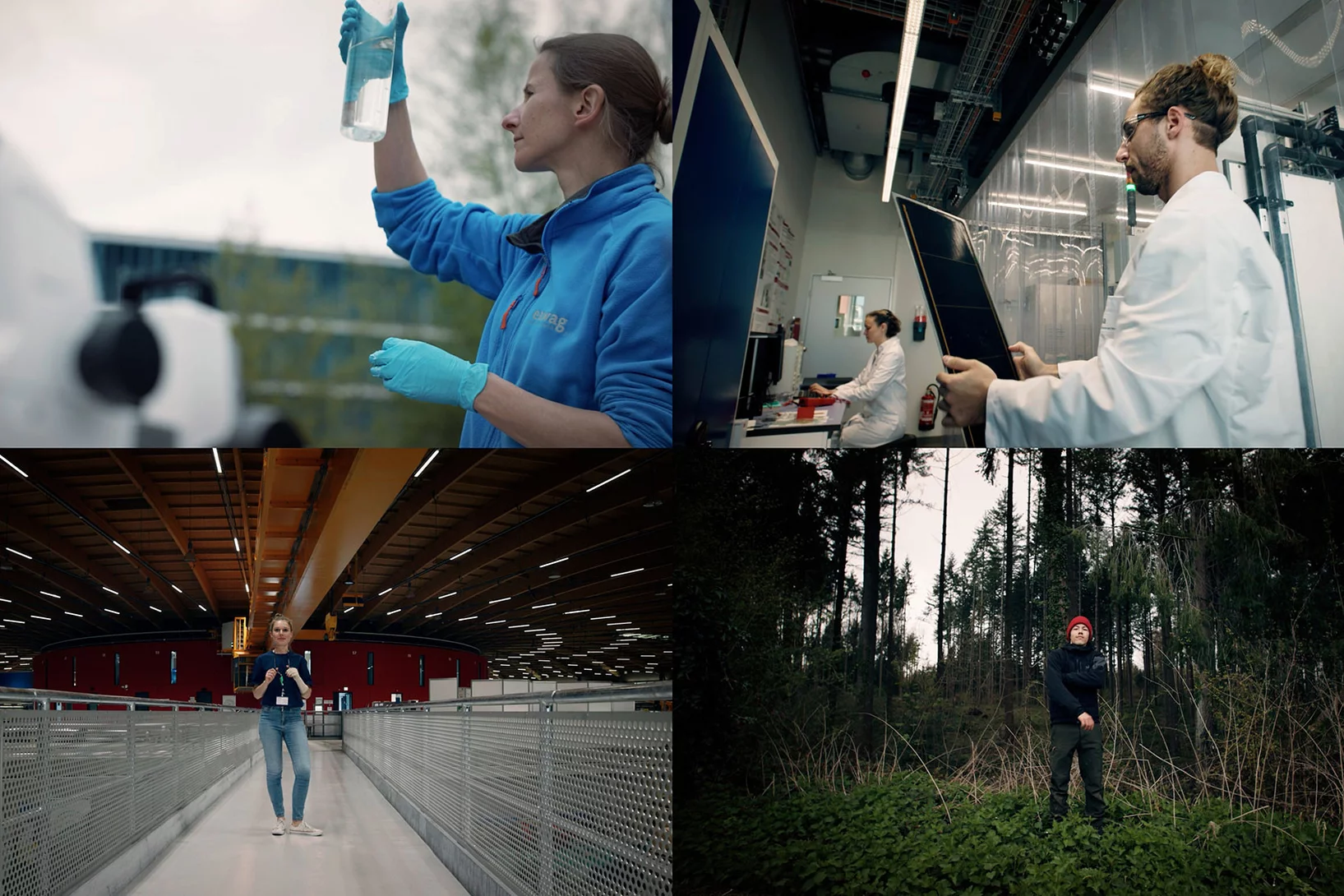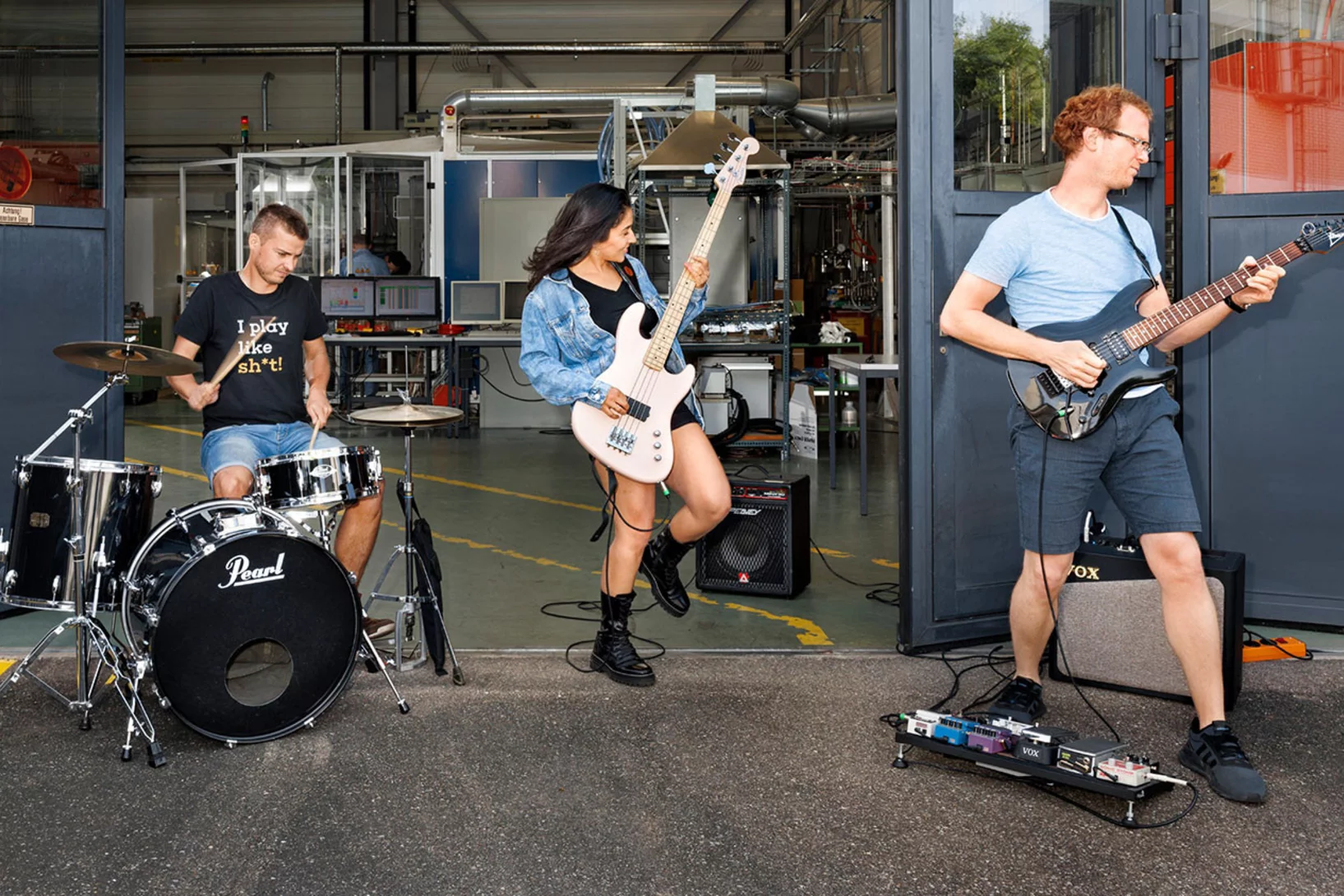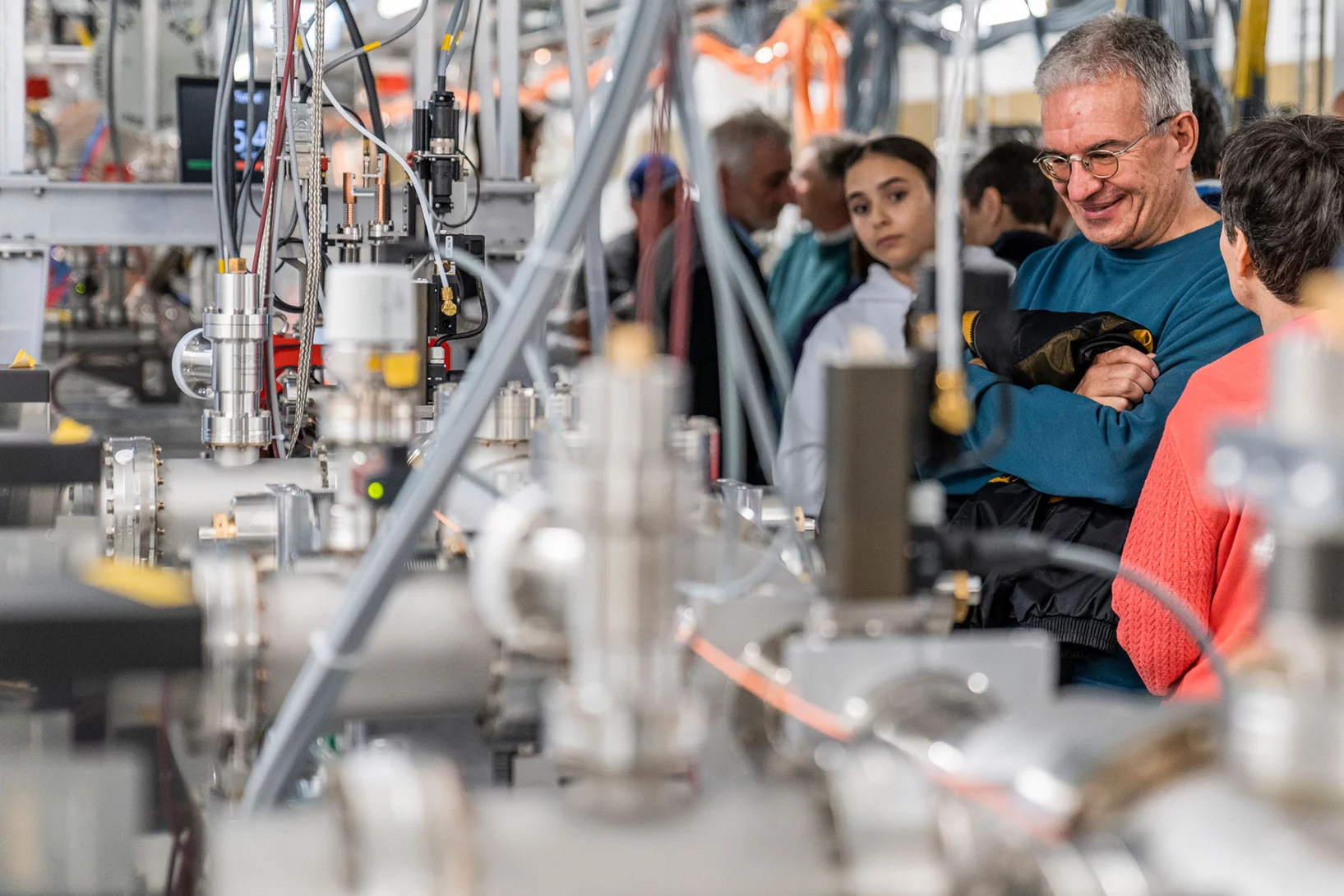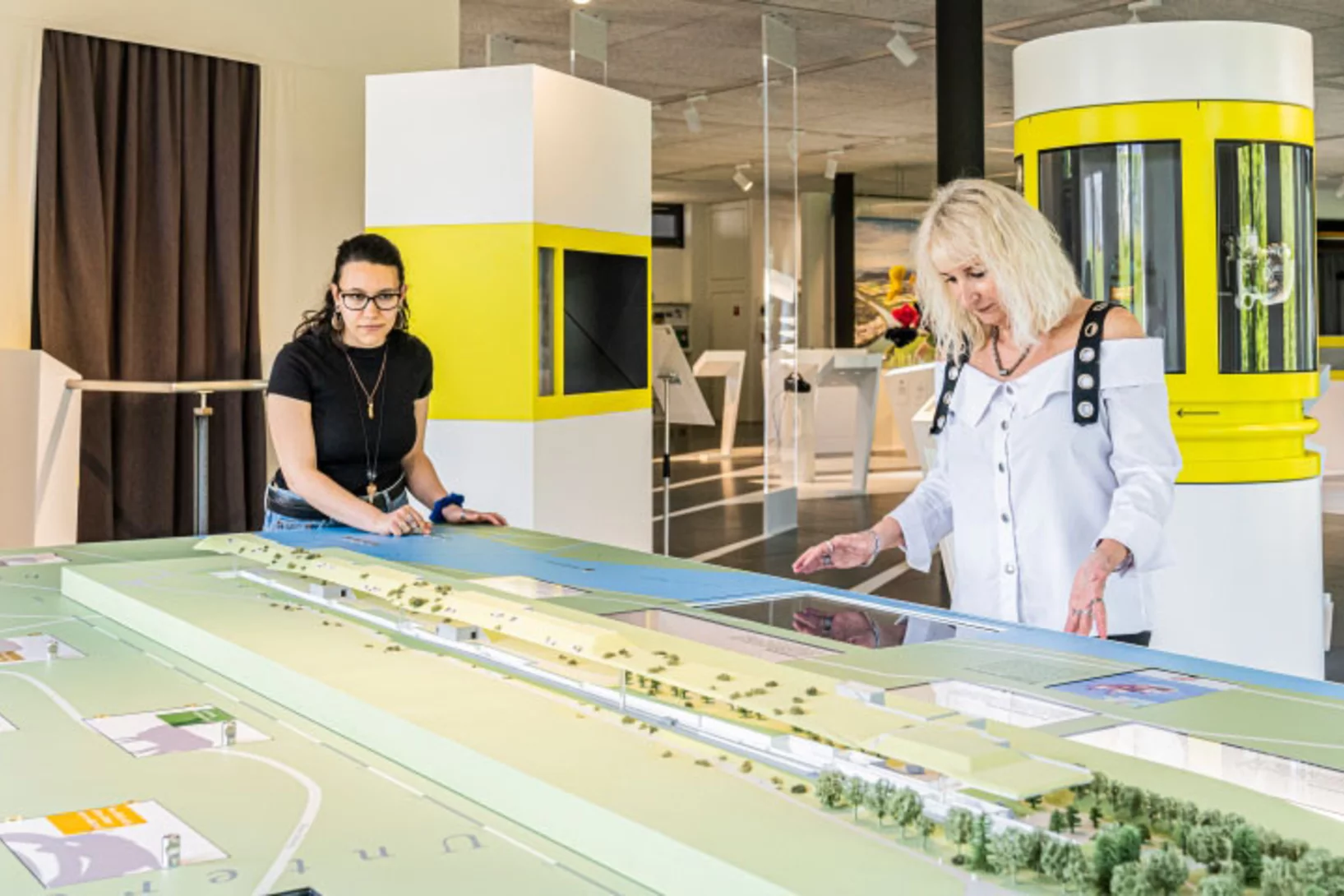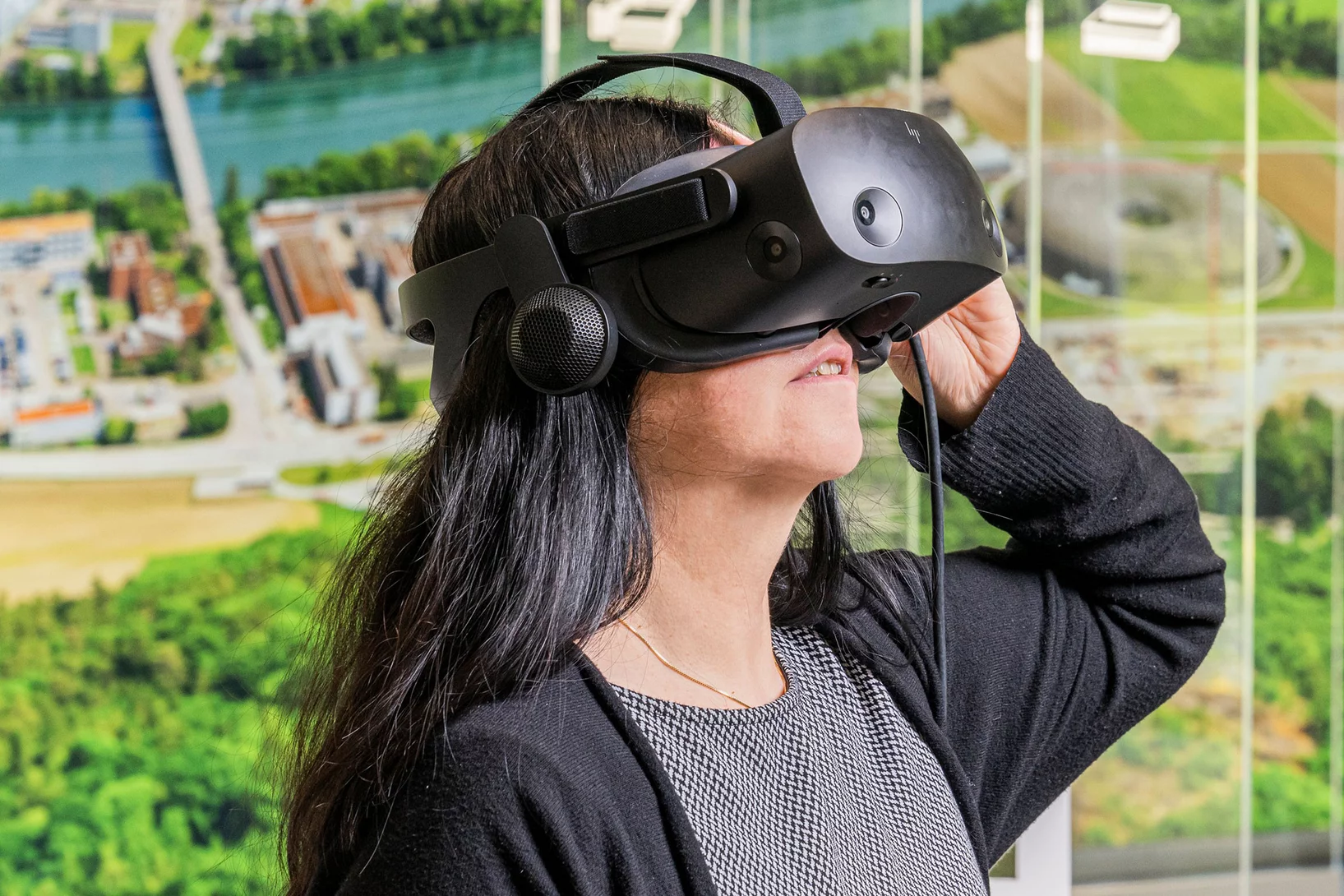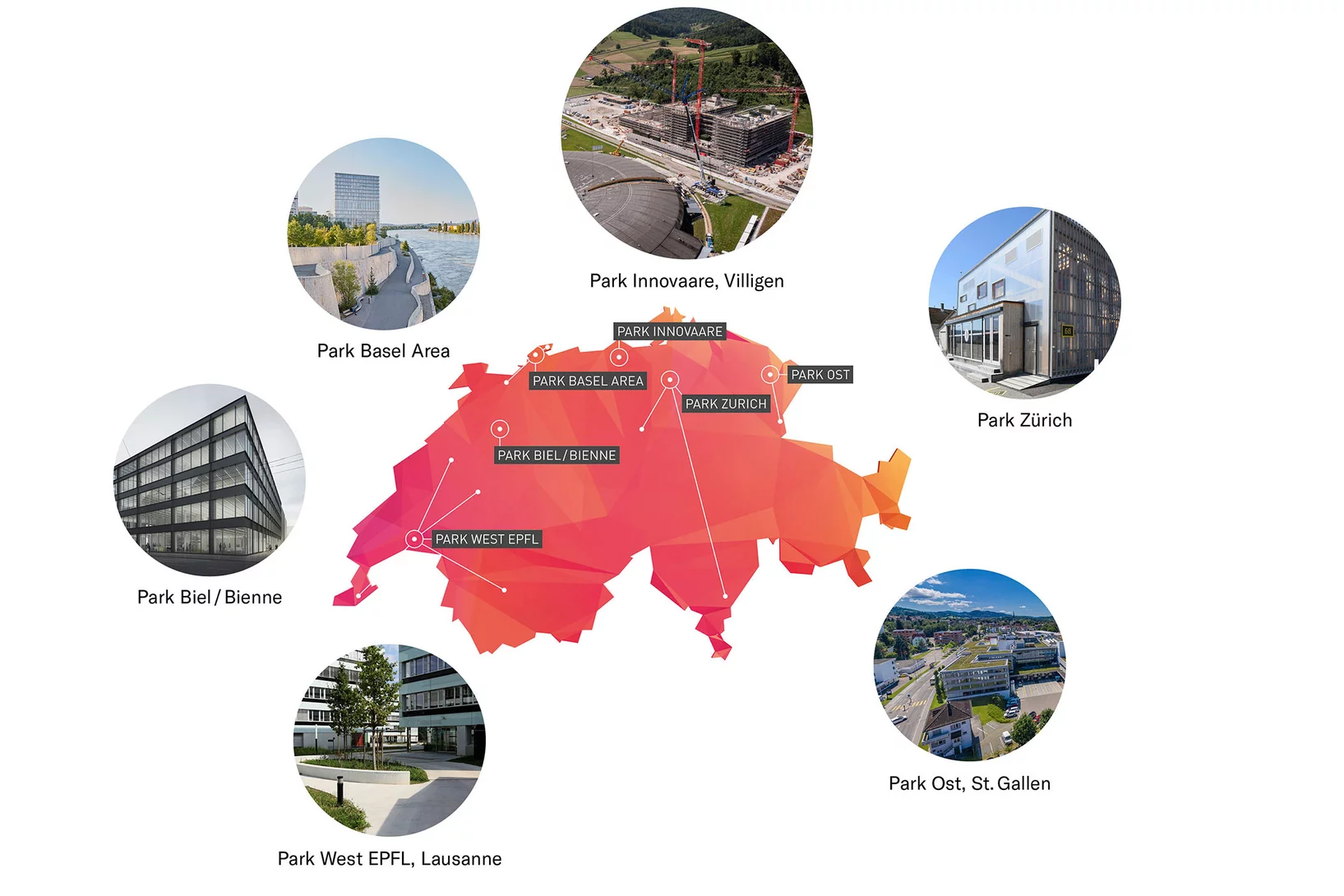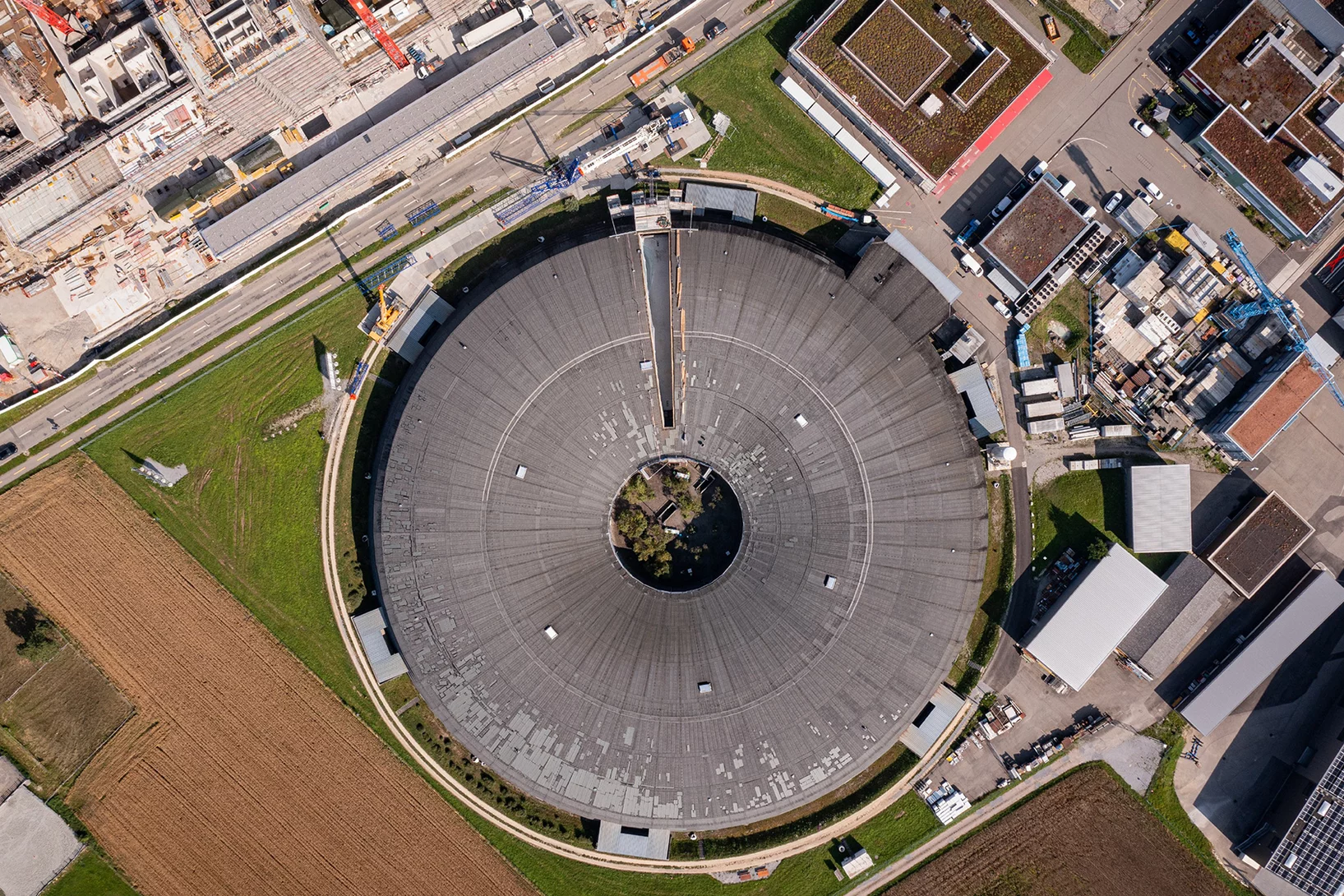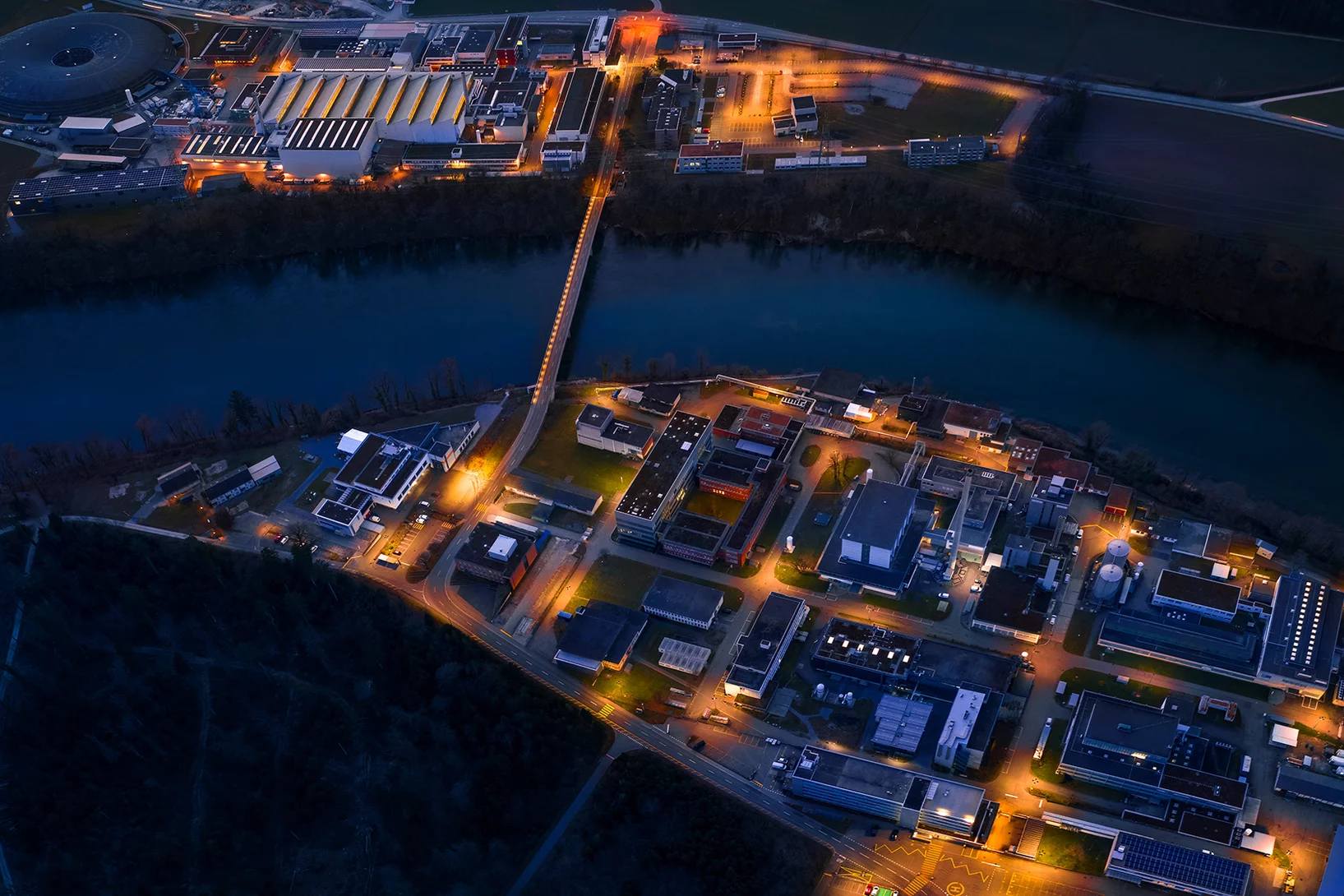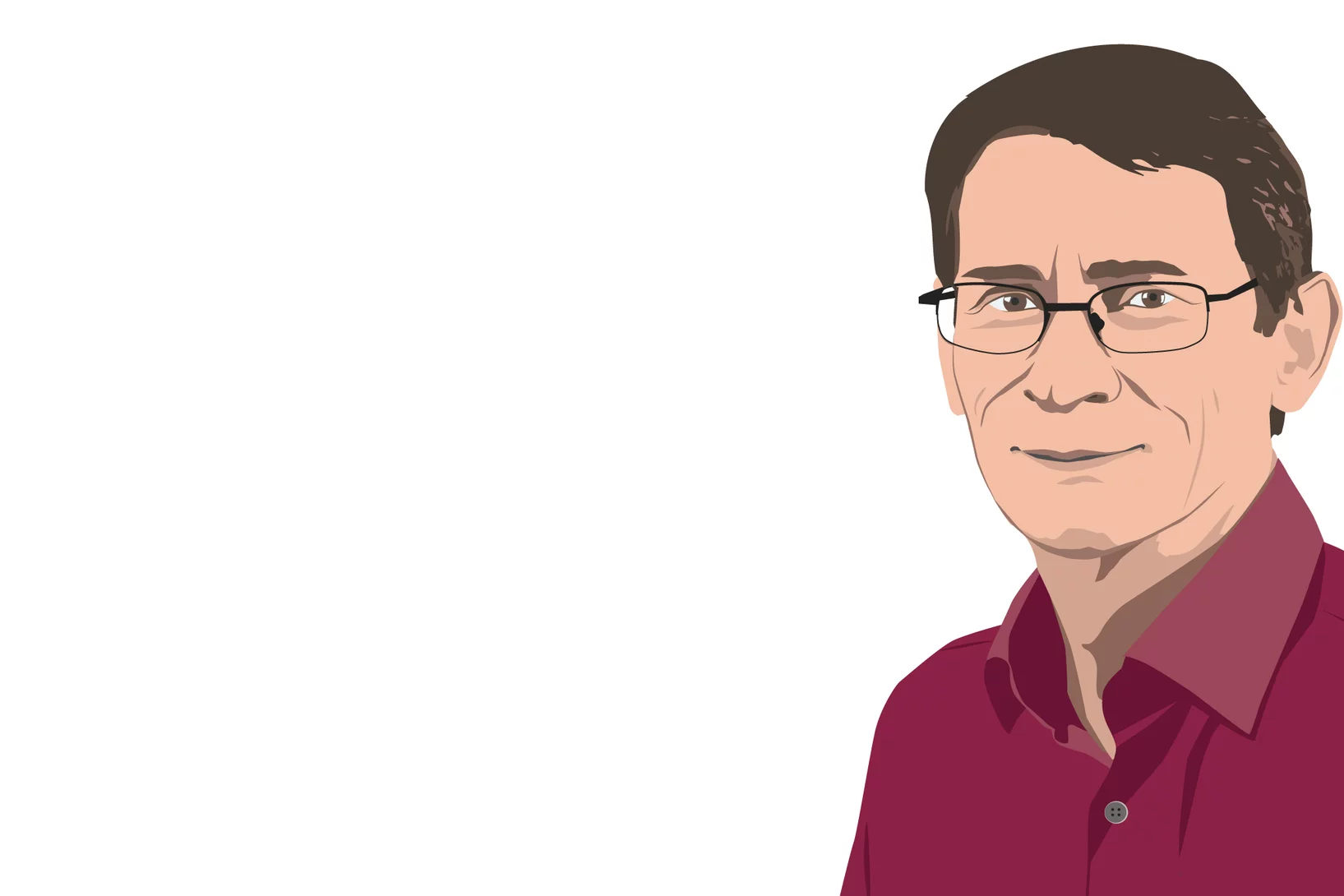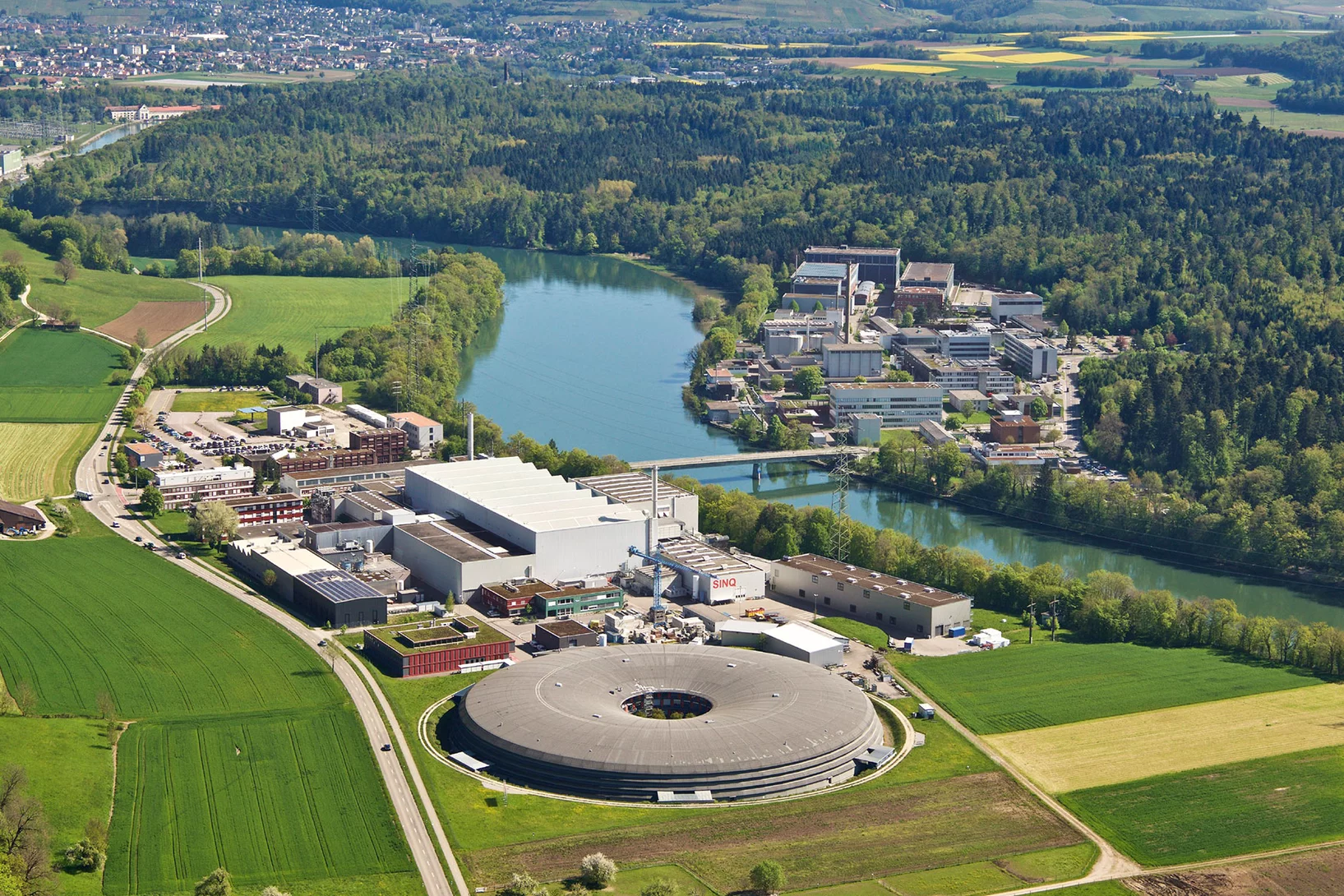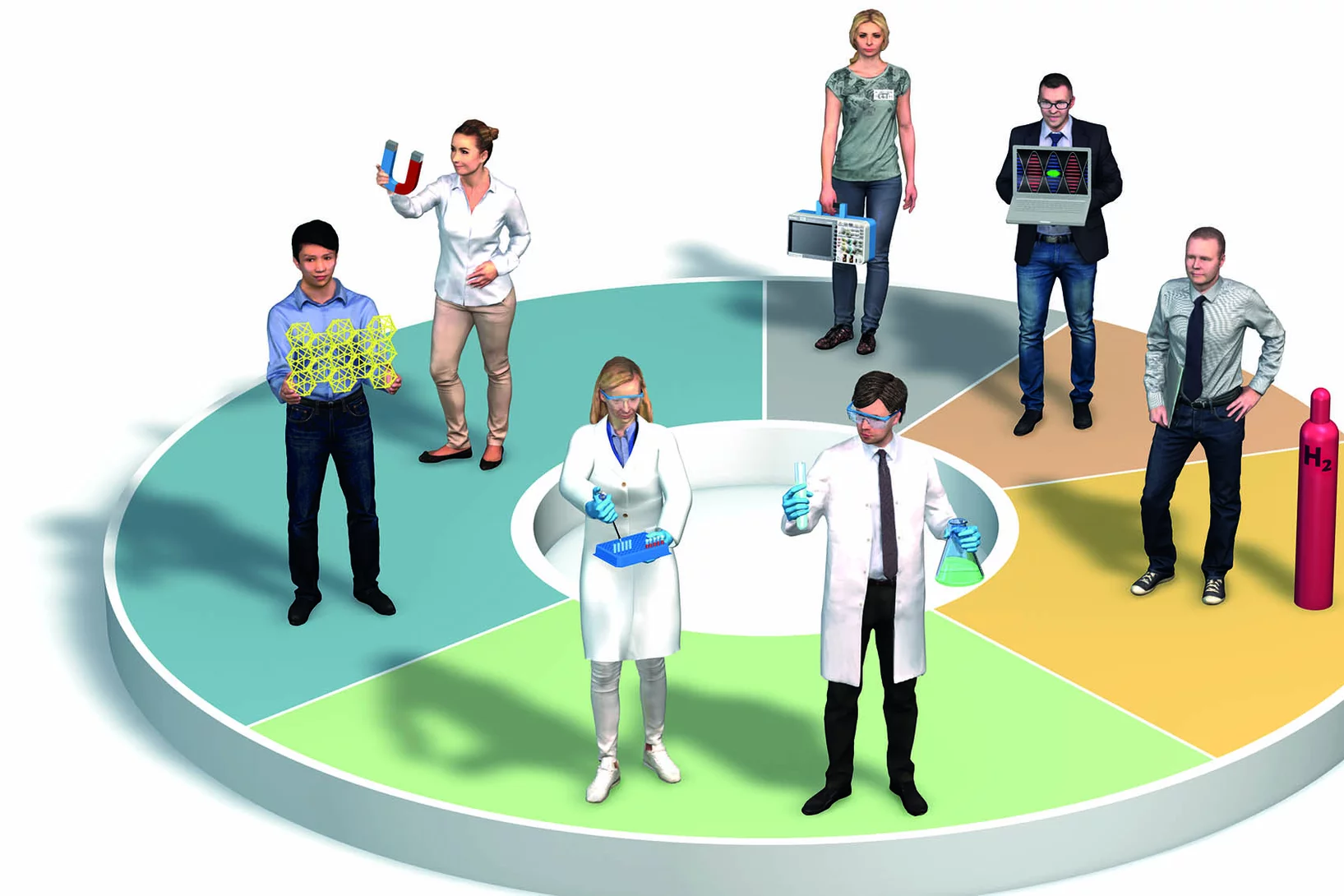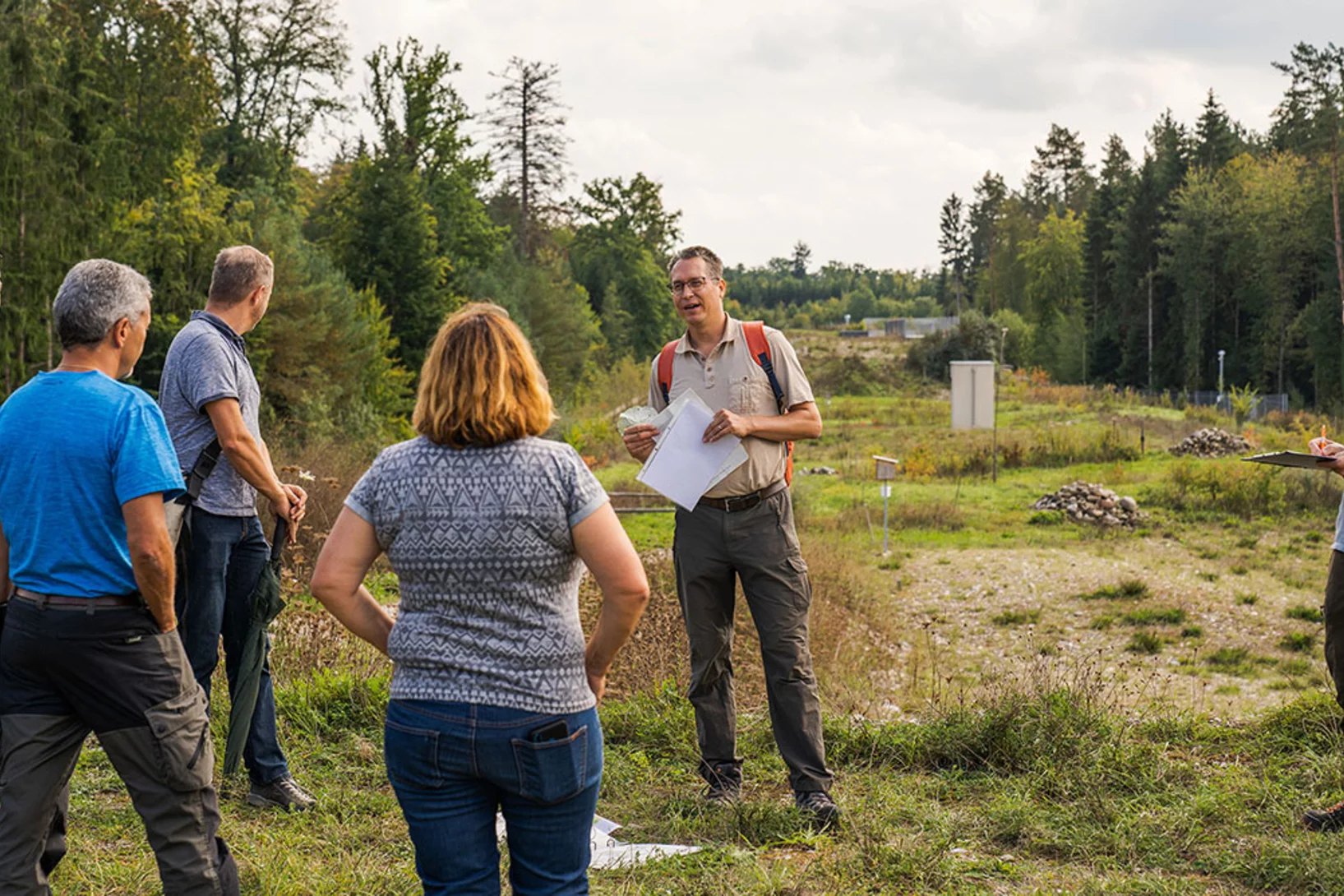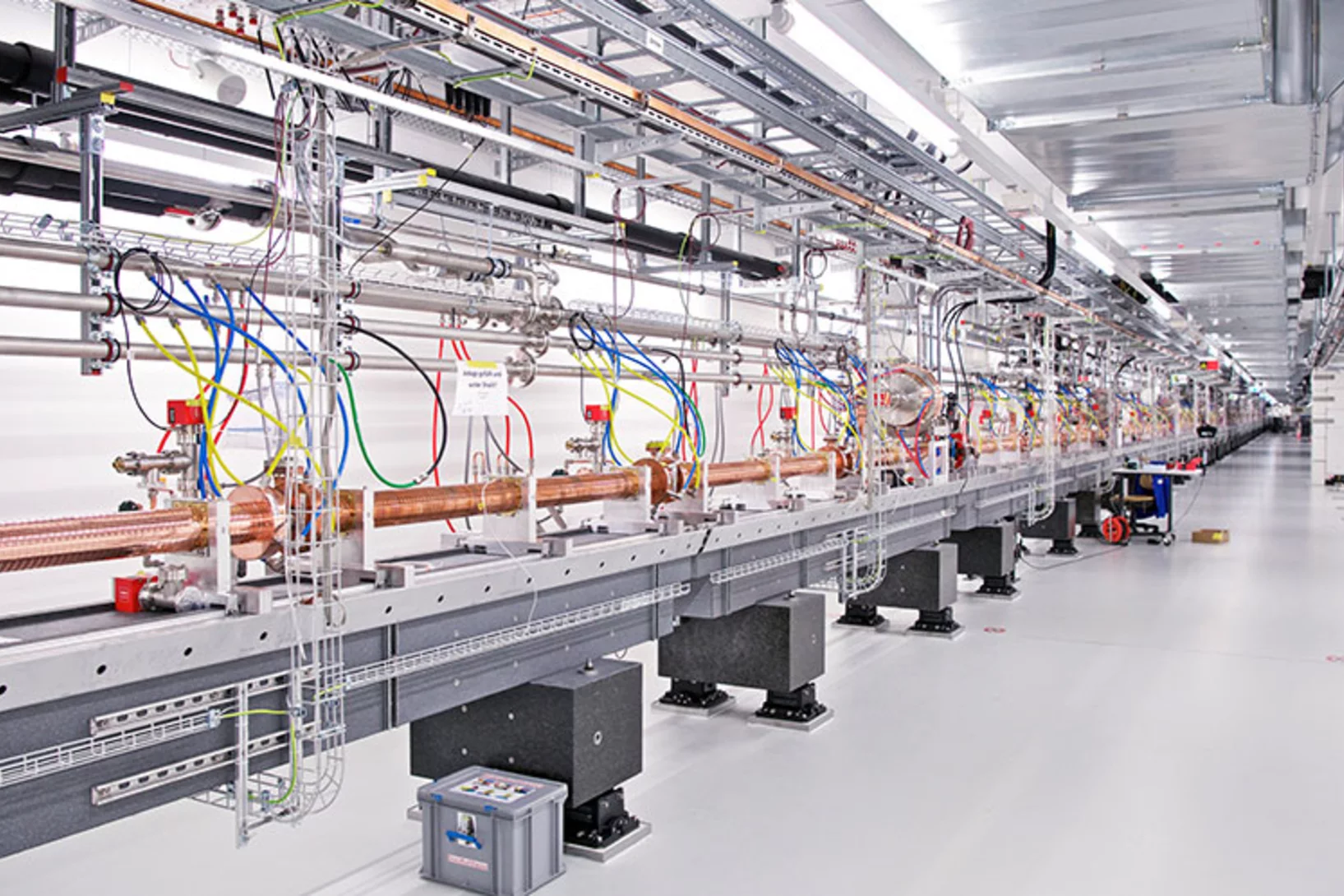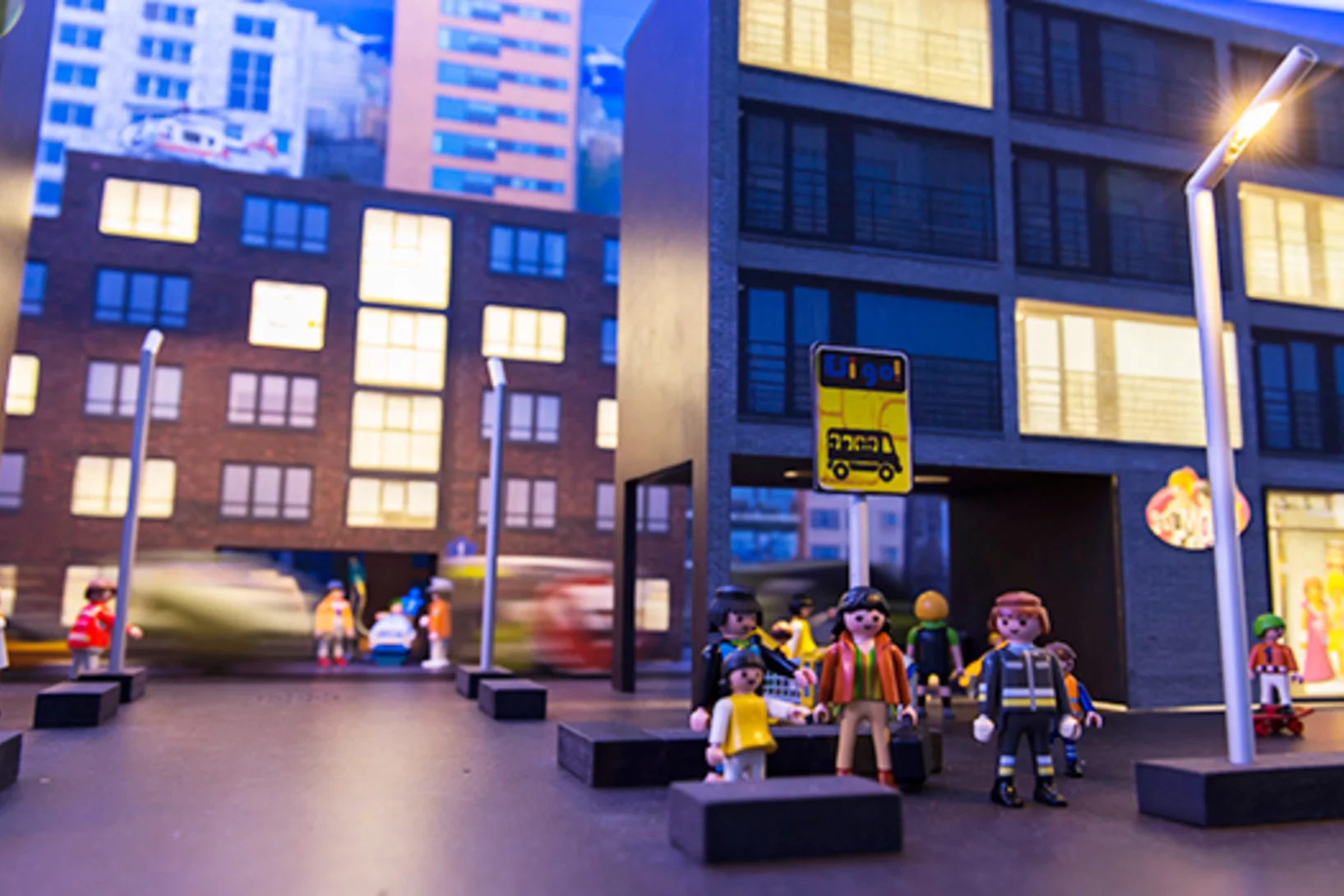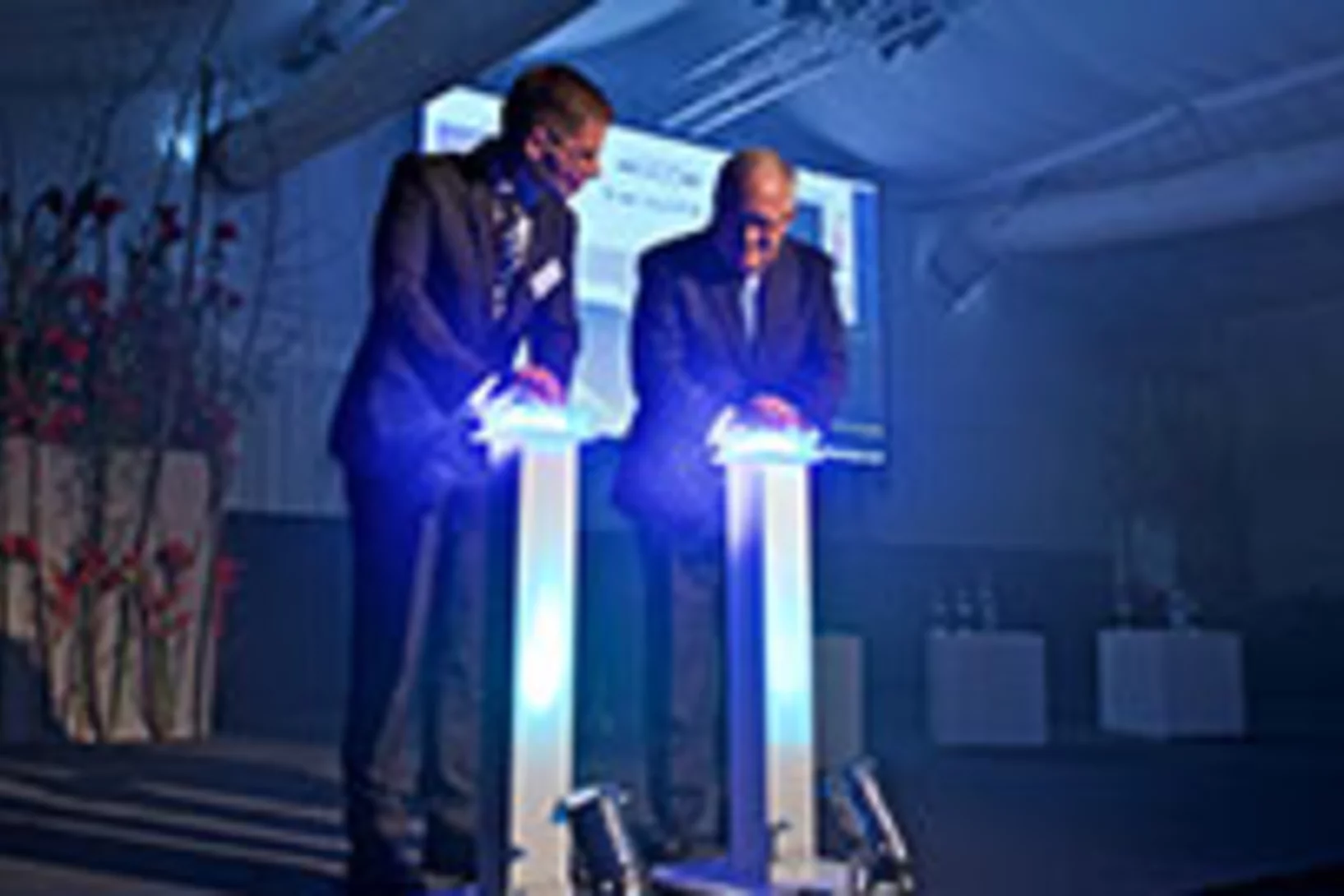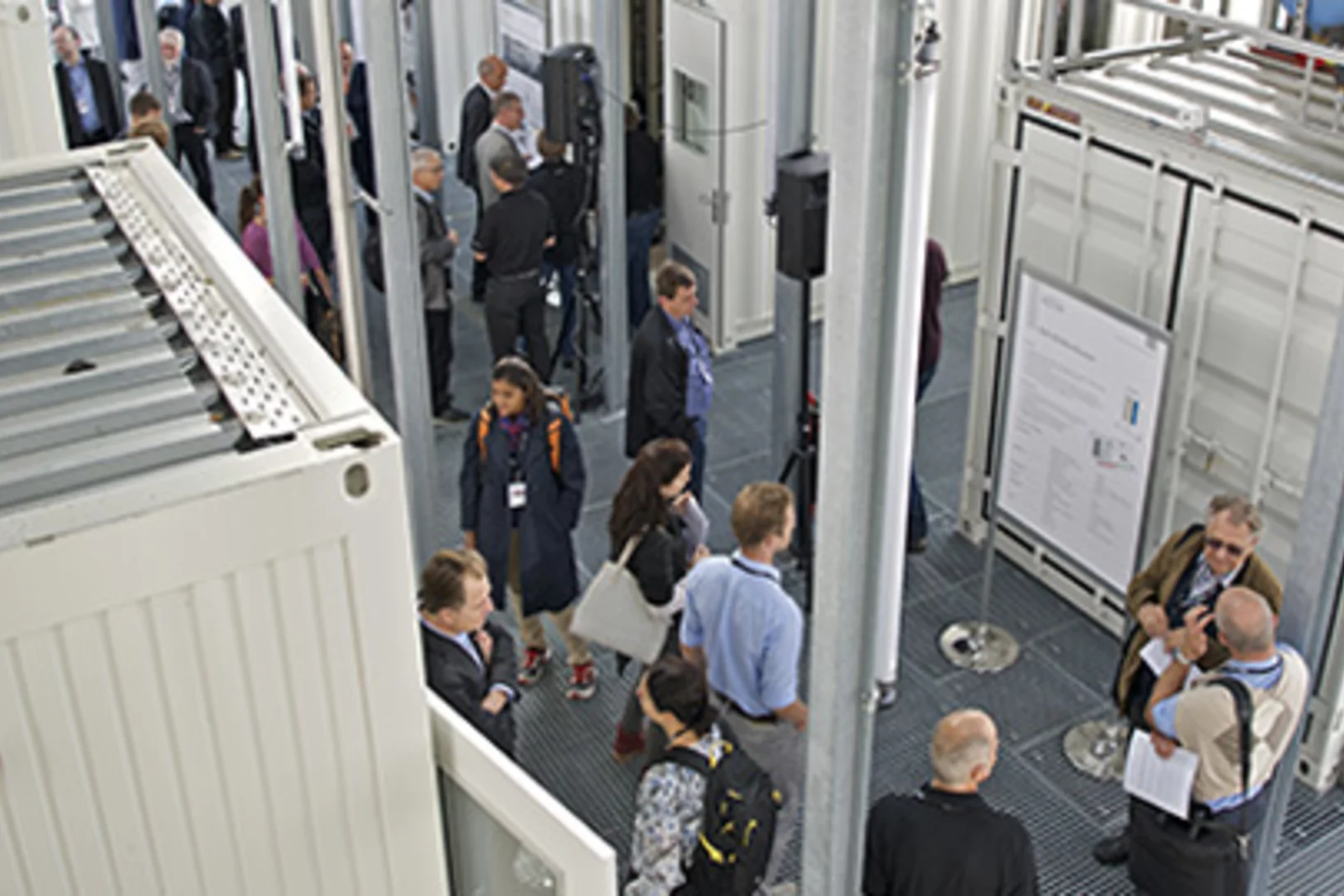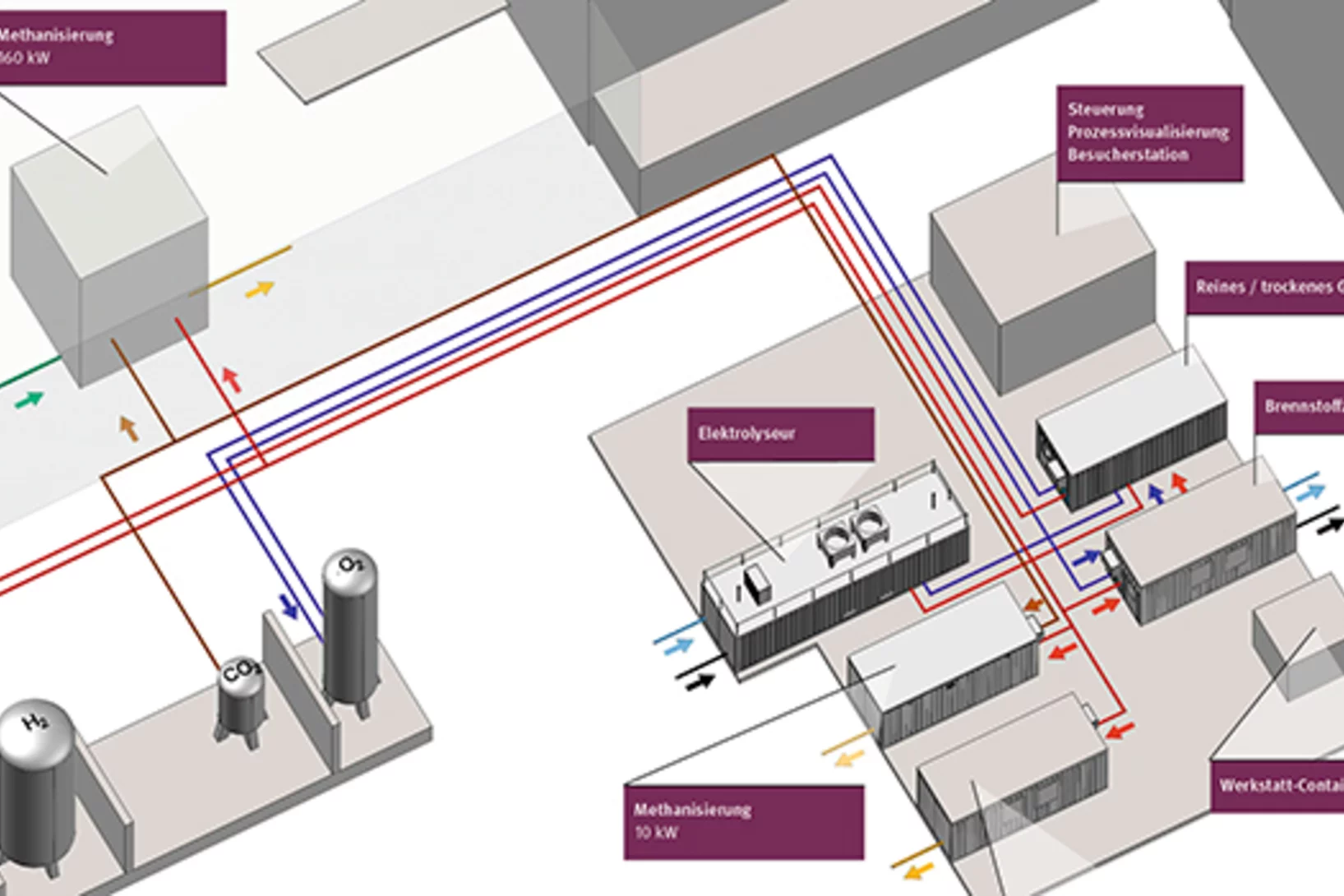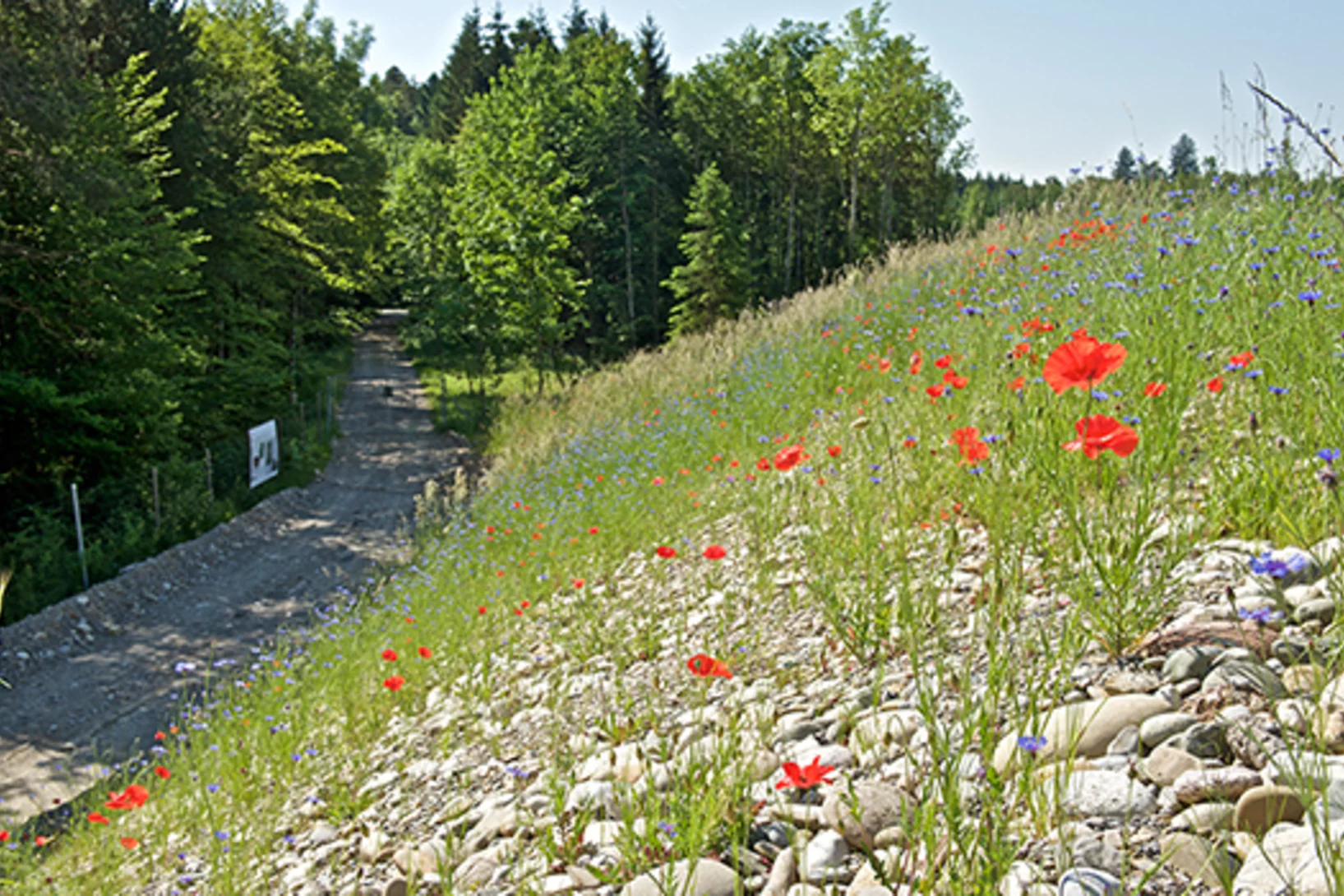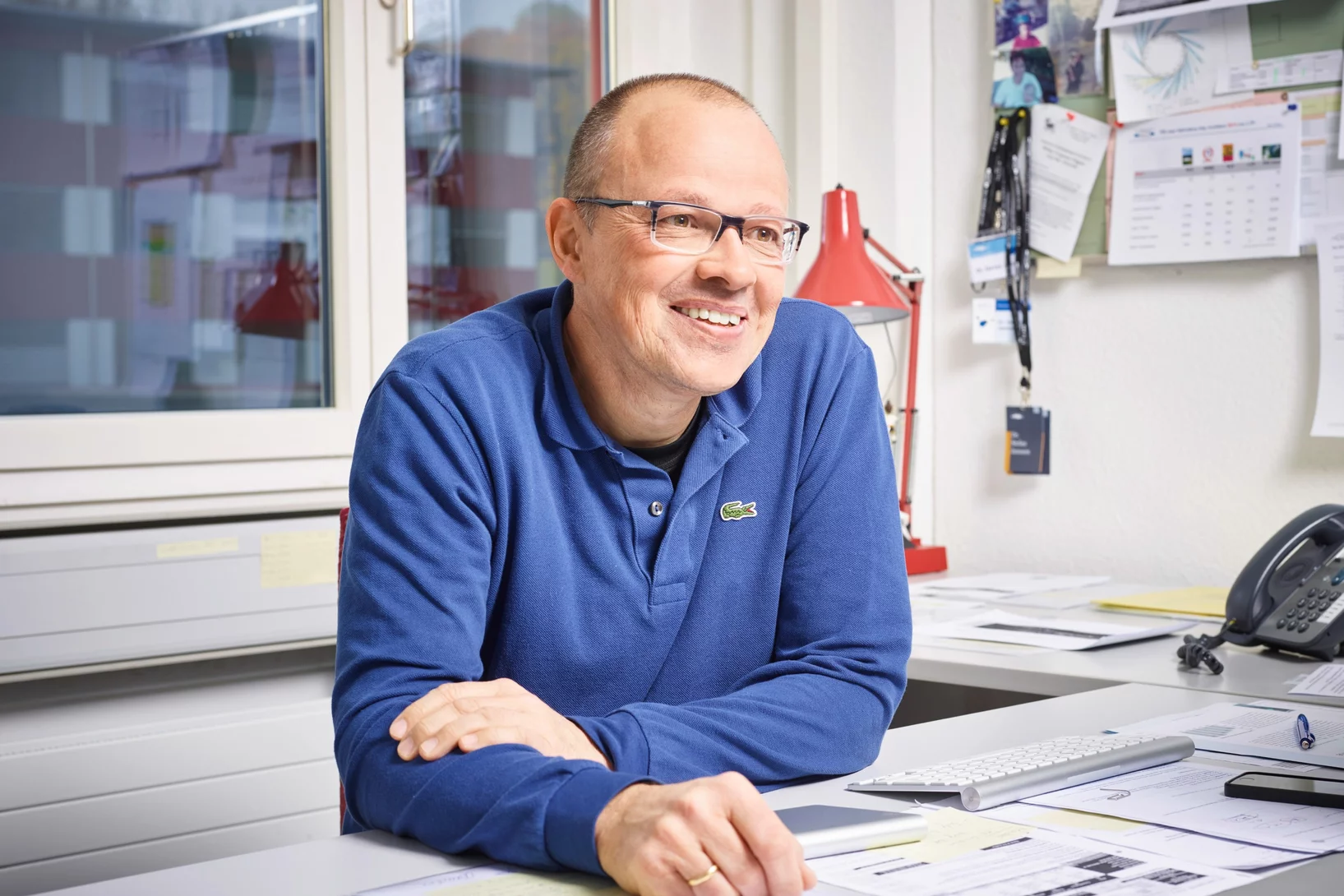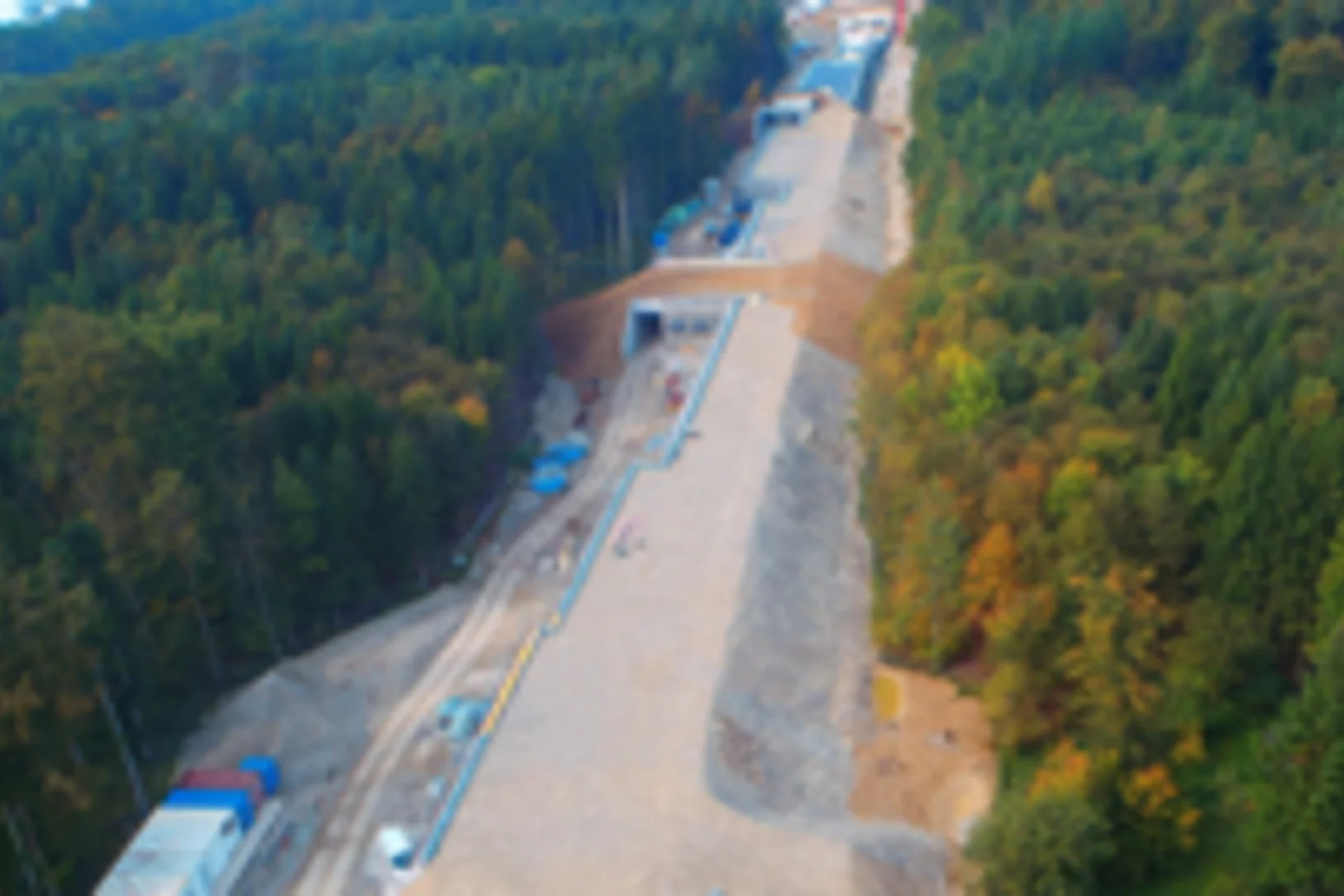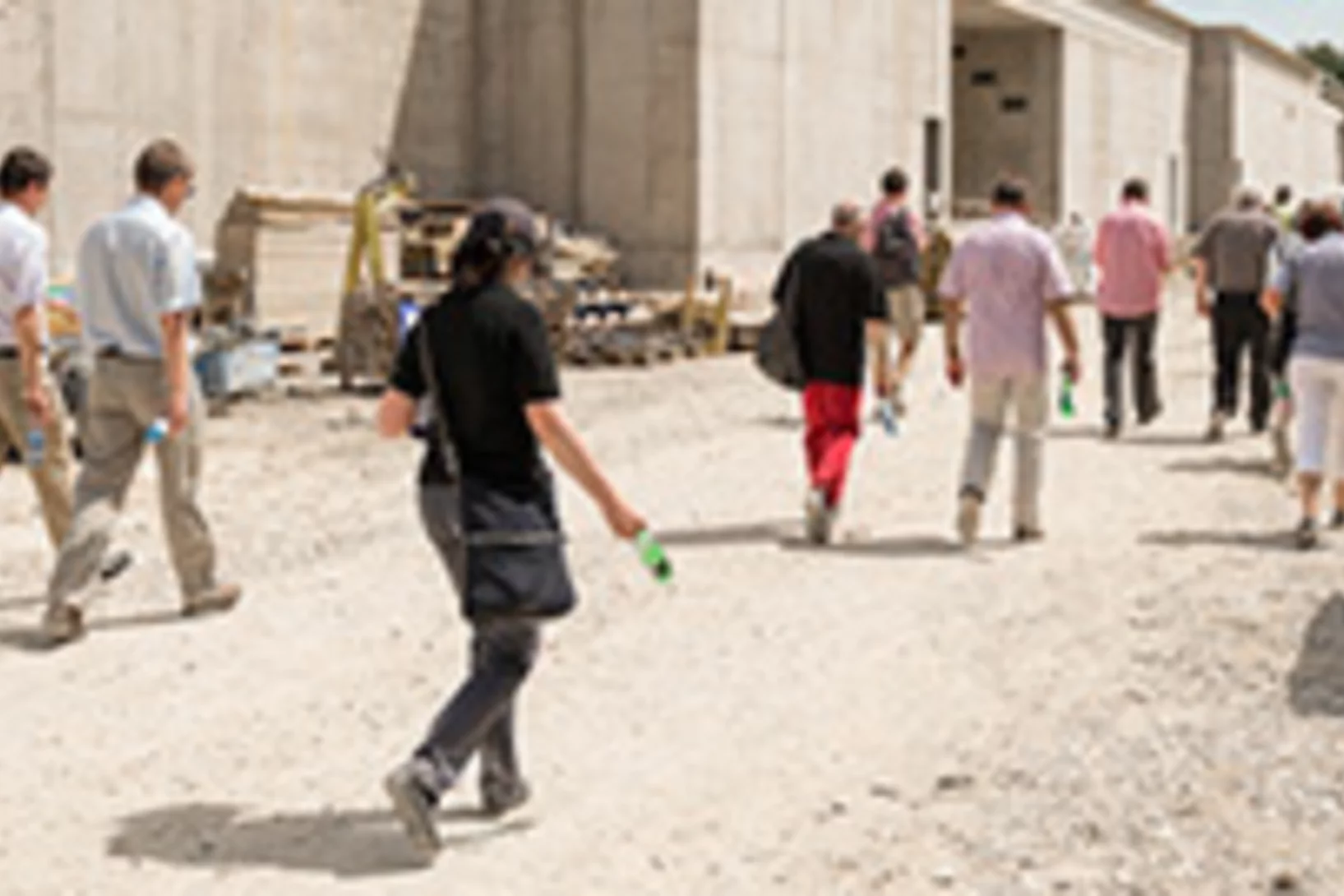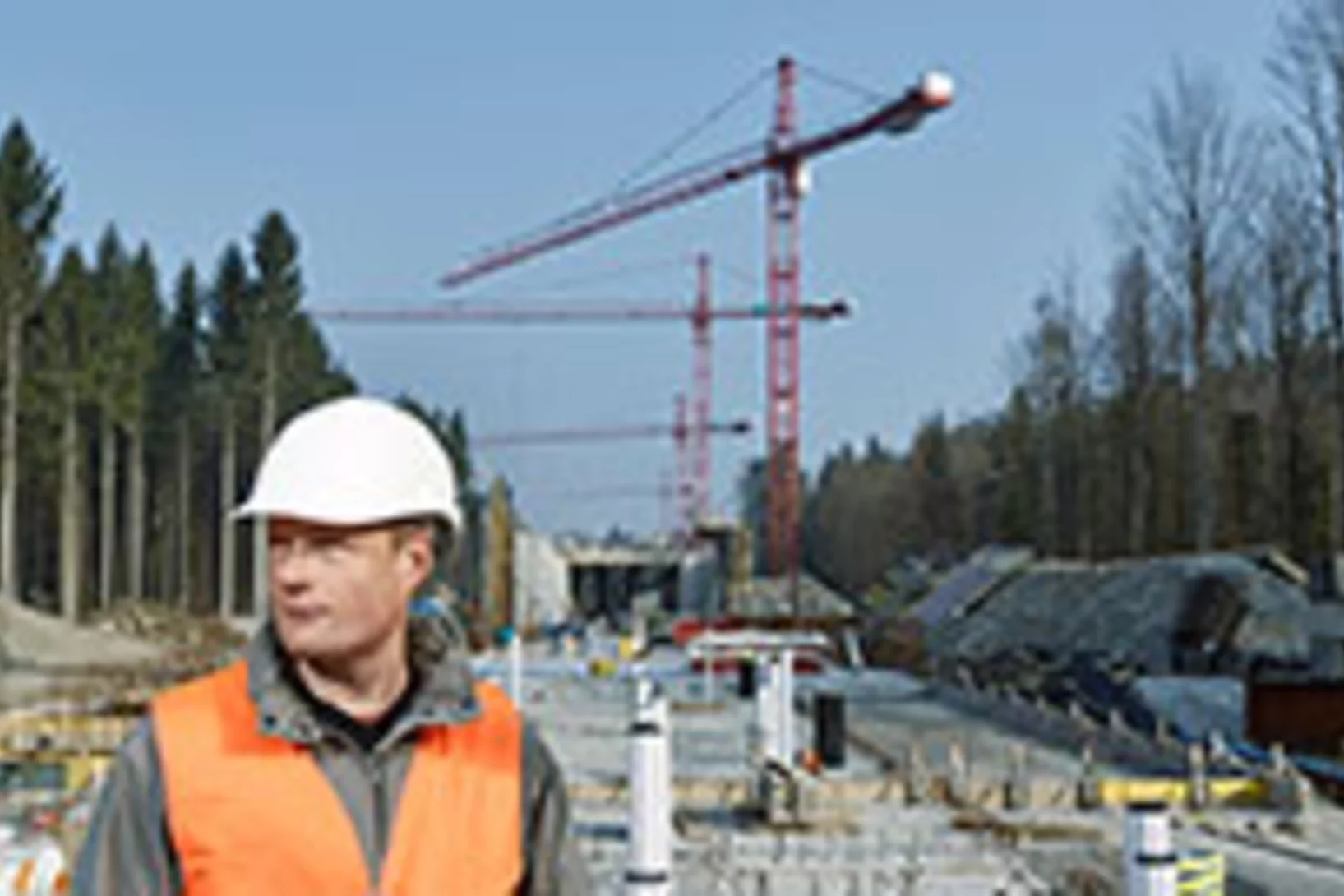PSI day-care centre returns to the campus
The new building is ready. From the beginning of August 2024, PSI children are once again being looked after on campus.
Aluminium and solar
The SLS building is currently getting a new roof.
PSI in a new design
Fresh, clear and innovative. Our new website is designed to encourage people to browse through our site online and on their mobile devices. It is part of a comprehensive rebranding project that was developed in collaboration with the Zurich branding agency Scholtysik.
Partnership to enhance both research and practice
The research institutes of the ETH Domain are strengthening their cooperation in strategic areas.
Breaking the ground as a game
Construction of new PSI day-care centre begins.
Music at PSI
Sometimes musicians drown out the technical background noise at PSI.
Open Day 2022
Nitrogen ice-cream, the Spanisch-Brötli Railway and loads of science – PSI invited the public to its Open Day where visitors got their finger on the pulse of research.
Visiting the researchers
A tour through the new exhibition in the PSI Visitor Centre
Visiting the researchers
New exhibition in the PSI Visitor Centre
A lively enterprise zone close by
Park Innovaare located next to PSI is growing, further pursuing its mission to help cutting-edge Swiss research transition to concrete applications and profitable companies.
SLS: The new crane comes from above
The Swiss Light Source SLS is getting a second hall crane. But how can the 42-metre-long, 40-tonne monster get into the building? The only way is from above.
PSI by night
Artificial light, singular radiance: Five pictures show PSI by night.
"Numbers help us improve"
Peter Allenspach is head of the Logistics Division at PSI. Through his work, he always has his eye on the numbers that describe the Institute.
Infografic «The PSI campus»
It's no coincidence that 5232 is the title of the PSI magazine: It is the unique postal code of the Institute. On the site of the PSI campus, the size of 48 football fields, there are still more numbers to discover, from daily coffee consumption to hundreds of thousands of metres of fibre-optic cables.
Infographic «People at PSI»
PSI has around 2,100 employees, including 800 researchers. In addition, guest researchers and visitors are regularly on site. Our infographic shows the people at PSI.
SwissFEL: a perfect habitat for the black mortar bee
For the construction of the SwissFEL facility in 2013, around five hectares of forest were cleared and transformed into a new habitat for flora and fauna. Biologists and forest engineers have now assessed the results of the renaturization project and are excited about the progress to date.
«Forschung online erleben»: Mittendrin statt nur dabei
Erstmals Live-Rundgang durch eine Grossforschungsanlage per Video-Stream. Am 9. September haben Interessierte exklusiv die Möglichkeit, sich von Experten des PSI durch den neuen Freie-Elektronen-Röntgenlaser SwissFEL führen zu lassen und zu erfahren, welche Rätsel der Materie und der Natur sich damit lösen lassen.
Welcome to Esiville
A new visitor’s station at PSI tells the story of a Swiss town that makes the change from a conventional energy supply to one with new renewable energy sources.
SwissFEL inauguration
Today, on 5 December 2016, the Paul Scherrer Institute PSI held an inauguration ceremony for its new large-scale research facility SwissFEL, with Johann N. Schneider-Ammann, President of the Swiss Confederation, in attendance.
Renewable energy: Experimental platform ESI is starting up
This fall, the time has come: The Energy System Integration Platform at the Paul Scherrer Institute PSI goes into operation. Today, in the framework of the double conference Networked Energy Research Switzerland, it was presented to the media and around 150 representatives from politics, industry, and science.
Structure of the ESI Platform
The road to a sustainable energy future leads through the integration of new renewable energy sources, from the sun, the wind, or biomass. Using the Energy System Integration or ESI Platform, research and industry can test promising approaches in all their complex connections and interrelations.
Cooperation with nature
With SwissFEL, a new landscape takes shapeBarely completed, the building housing the X-ray free-electron laser SwissFEL has disappeared again beneath a mound of earth. Since then, planting and landscaping have been under way on and around this major research facility of the Paul Scherrer Institute PSI. Its special location, in a forest, demands that SwissFEL be integrated in an environmentally appropriate way. So the facility is, from the outside, nearly invisible. And rare animals and plants have gained new living space.
At the interface
Interview with Stefan Janssen, Head of the User Office
Stefan Janssen is Head of the User Office at Paul Scherrer Institute PSI. In an interview, he explains why the PSI’s large research facilities are popular with researchers coming from other institutions, how he handles the many applications and how he supports users who come here to conduct experiments.
A large research facilities disappears in the woods
The building of the new PSI large research facility SwissFEL in Würenlingen forest could only enjoy the sunshine for a brief spell: it is now disappearing under a mound of earth. This superstructure is one of the measures taken to integrate the facility as harmoniously as possible into the natural environment.
Tag der offenen SwissFEL-Baustelle
Vergangenen Sonntag luden das Paul Scherrer Institut PSI und die Arbeitsgemeinschaft EquiFEL Suisse die Einwohnerinnen und Einwohner der Umgebung zum Tag der offenen SwissFEL-Baustelle ein. Rund 600 Interessierte informierten sich an mehreren Stationen über den aktuellen Bau- und Projektstand.This news release is only available in German.
Big building on a millimetre scale
For the electrons to reach the necessary energy level, their path in the linear accelerator needs to be absolutely straight. Even the slightest bend means a loss of energy, which the comparatively short SwissFEL linear accelerator cannot afford. Consequently, even the earth’s curvature needs to be balanced out while constructing the building, which not only requires state-of-the-art measurement technology, but also continuous monitoring.
